Bang Khun Thian: On the eroded coast of Bangkok
Not many people are aware that Bangkok has a coastline. With some new attractions along the Gulf, it's a fine area for a day trip. (Island Daze #30)
The whir of spinning bicycle wheels joins the splash of seawater in our ears. Cooling our skin, a breeze shakes the leaves of mangrove trees that reach right up to the Gulf of Thailand coast. Believe it or not, we are in Bangkok.
When viewed on a map of the Bangkok special administrative area, the district of Bang Khun Thian looks like the hind legs of a leaping elephant. This flat and wet district extends from the southwest corner of the city for some 25 km, finally bumping into a four-km expanse of muddy seacoast threaded by numerous canals, seafood farms and what’s left of a once-sprawling mangrove swamp.
If it weren’t for the old cement border marker that stands a half-km offshore, Bangkok’s coastline would be indistinguishable from those of neighboring Samut Prakan province, which covers the coast stretching east to the mouth of the Chao Phraya River; and Samut Sakhon province, extending west to the Tha Jeen River estuary. This article focuses on the Bangkok stretch of coast along with a bit of Samut Sakhon. I’ll cover much of the Samut Prakan coast — including historical forts and a riverine island — in a separate article soon.
Contaminated coastline
The name Bang Khun Thian is thought to come from ton thian thong, a type of coastal tree. The subdistrict that actually borders the Gulf is called Tha Kham, meaning ‘tamarind pier,’ another hint that flora once shrouded the coast.
Tha Kham is a watery domain where houses sit up on stilts, many locals rely on boats to get around and high tide can deliver ankle-deep water several km inland. Nearly all of the coastal forest was cleared last century to make way for rectangular ponds used for farming fish and shrimp. Unfortunately, due to pollution, some of the aquaculture sites are no longer viable for seafood farming.
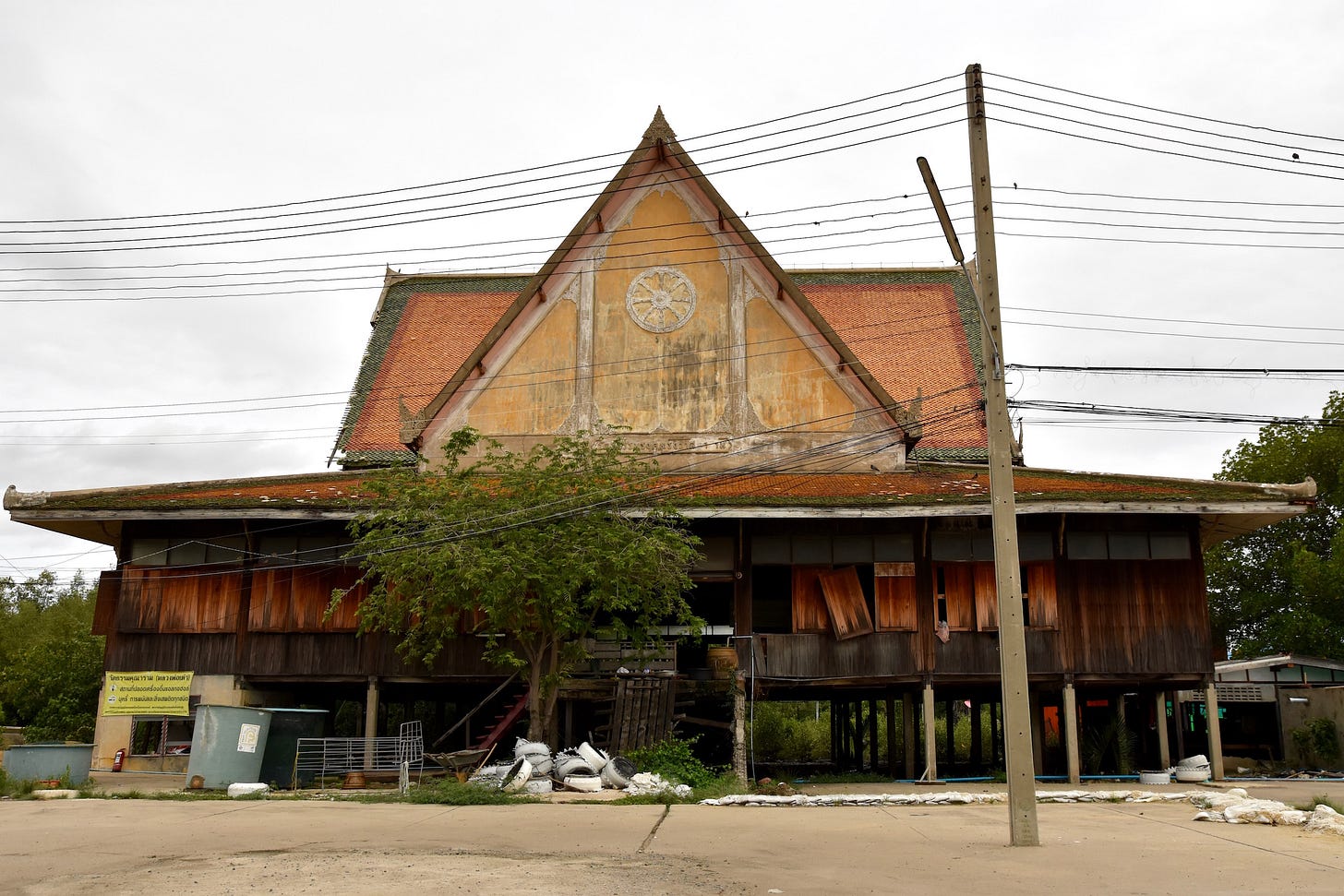
Wastewater became a critical problem in the 2000s, wiping out entire shrimp farms and forcing some locals to search for new livelihoods. Some of the harmful waste comes from unsustainable aquaculture itself — both along the coasts and further upstream. The bulk of it, however, pours out of poorly regulated factories and villages that lack septic tanks in metro Bangkok and beyond.
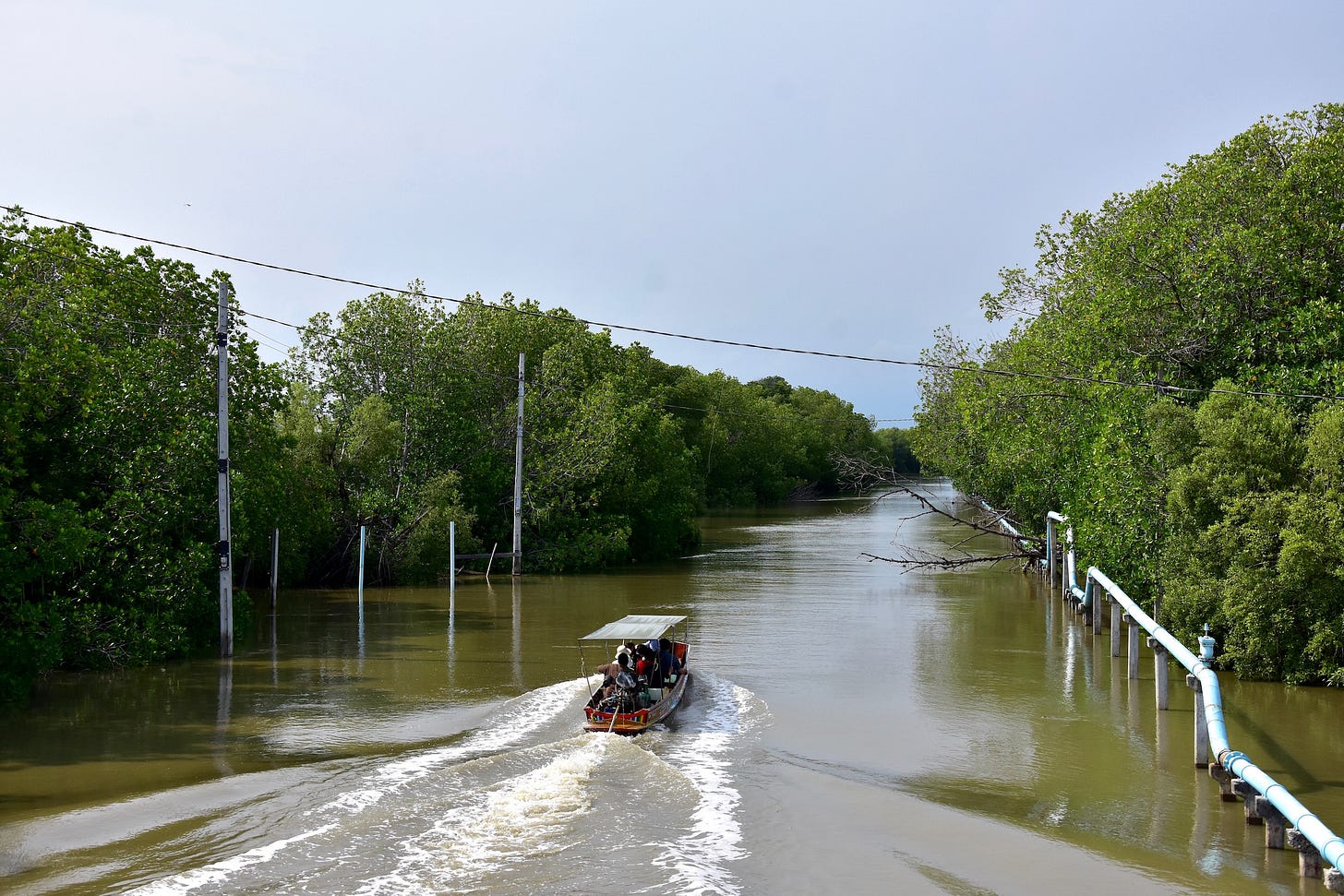
Inhabitants of coastal areas bear the brunt of wastewater that originates much further inland, often in places where authorities do little to curb the pollution because the rivers and canals carry it away, effectively turning it into someone else’s problem. Bang Khun Thian residents reportedly feel ignored by Bangkok officials who are more concerned with problems that afflict heavily populated areas than those endured in the city’s sleepy and isolated slice of coastline.
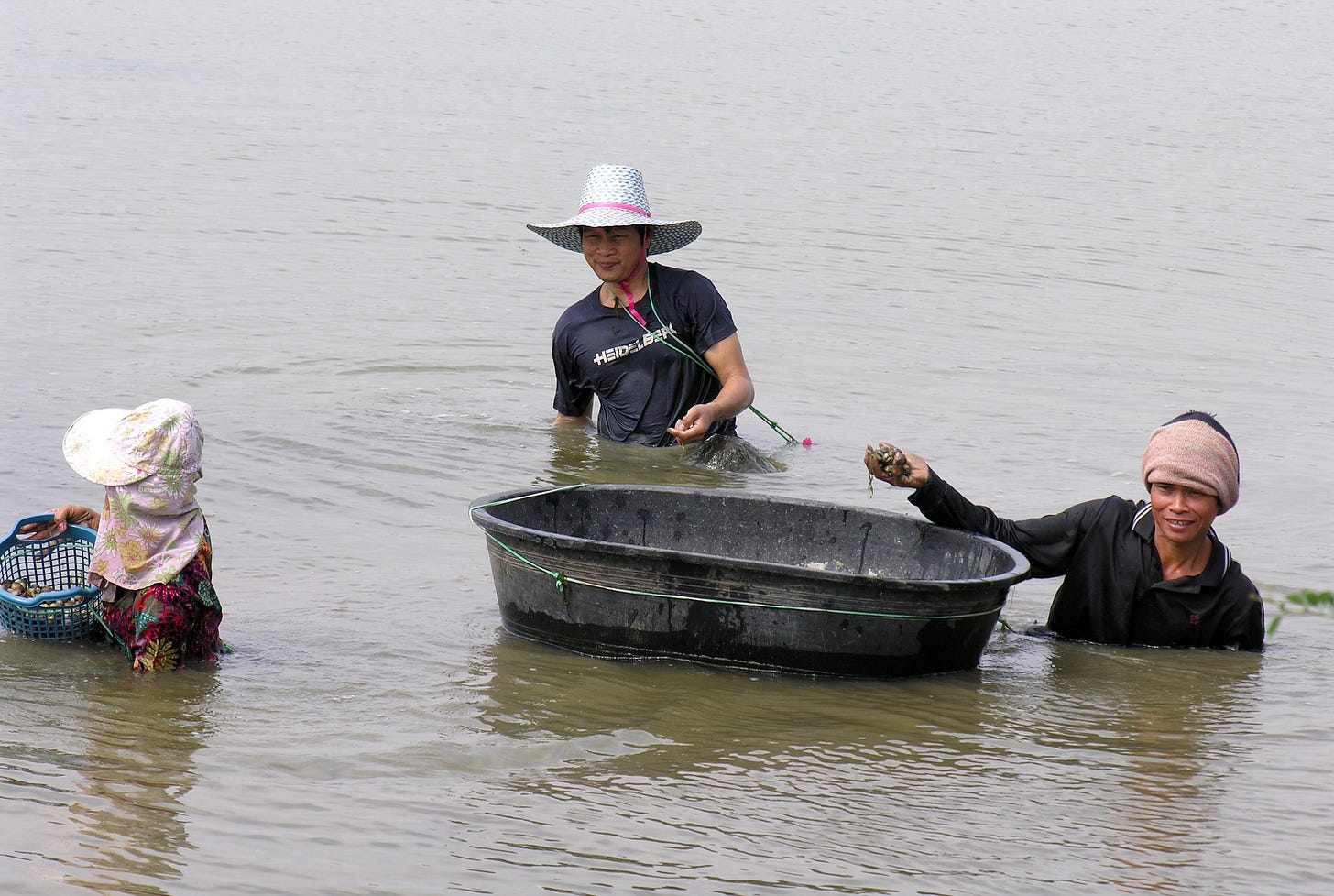
But the problem is bigger than Bangkok. A failure to prevent wastewater from entering river systems throughout Central Thailand has rendered the upper Thai Gulf hypoxic, meaning that low oxygen levels make the water uninhabitable for some marine life and force fishers to travel farther in search of a catch. The hypoxia varies in severity depending on the time of year and weather conditions. It tends to be worst during periods of serious flooding, when inland freshwater rushes off the mainland and contaminates the Gulf in higher volumes than usual.
Another problem with local aquaculture is the severe coastal erosion that followed the clearcutting of mangrove forests in the mid to late 20th century. Erosion has crept more than a km inland since the 1950s, forcing villages to relocate and leaving abandoned utility poles protruding from seabeds that once appeared as farms and roads. The erosion has intensified in recent years, but, as we see on a bike ride, Thailand is responding with a solid defense strategy.
Two routes to the coast
Vendors sell dried fish along Bang Khun Thian’s busiest land-based thoroughfare, Highway 4008, where trendy cafes have materialized to serve the day-tripping urbanites. The road runs beside Khlong Sappha Samit, a canal dug in 1879 to enable junks to journey from the mouth of the Chao Phraya to the mouth of the Tha Jeen, 30 km to the west, while avoiding the often-choppy Gulf waters.
In an area that can be described as the heart of Bang Khun Thian, we park at the district’s Local Museum to peruse maps and some antique fish traps and ceramics. We rent yellow pushbikes from a gracious man and cross the road to find the recently built Saphan Rak Thale, meaning ‘Love Sea Bridge.”
Developed to make it easier for people to hit the Bangkok coast without using a boat, this seemingly sturdy concrete bikeway extends straight south for three km. Love Sea Bridge deposits us onto a quiet lane draped in mature mangrove branches that are part of a 50-meter wide, three-km-long finger of mangroves squeezed between aquaculture plots, which stretch as far as the eye can see.

Halfway down the lane we cross a smaller canal, Khlong Long, at a cluster of modest wood-and-cement houses. A monitor lizard snacks on the tiny fish left sticking to a folded-up fishing net. A shirtless elderly man walks by with a youngster. If the boy leaves Bang Khun Thian when he grows up, I think, he’ll need to explain how his version of ‘being from Bangkok’ is not what most people assume.
The bikeway slices between bushy mangroves and more of the area’s long rectangular shallows. Netting strung to wooden posts marks the fish containment areas used by farmers. Thunder rumbles in the north, where life bustles amid the pavements and skyscrapers of one of Southeast Asia’s largest cities.
Along the coast we can see how a vast expanse of shallows have been reclaimed as part of erosion-prevention efforts spearheaded by the Dept. of Marine and Coastal Resources. Clusters of bamboo posts are set in rows, like batteries of soldiers, with young mangrove trees planted between them. Within a decade, the mangroves should grow tall enough to reinforce the bamboo with strong snaking roots, blockading the sea from encroaching further inland. This approach is being employed along much of the upper Gulf coast, from Phetchaburi to Chonburi.
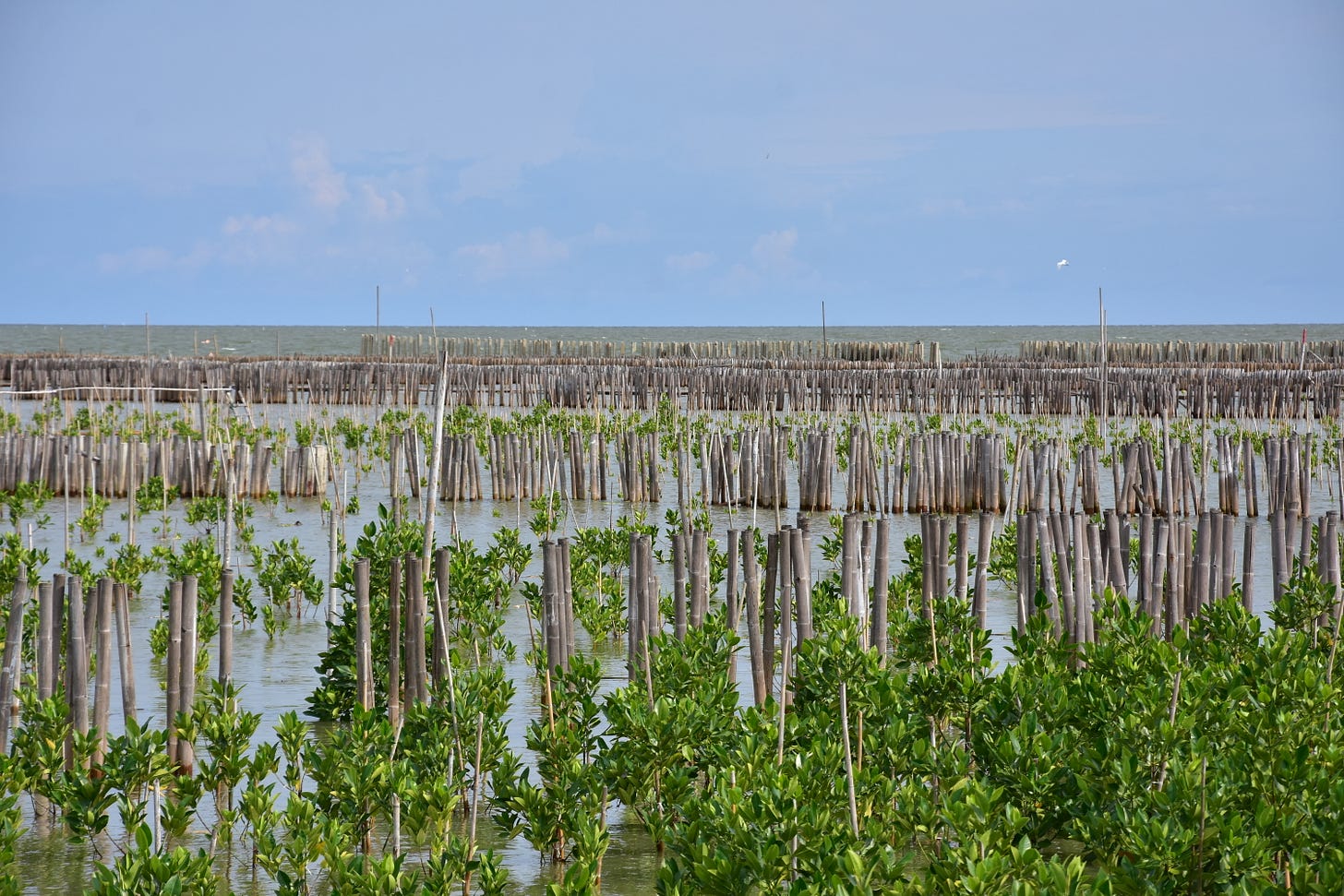
At the end of the bikeway stands a stilted platform where we soak in the sea breeze and observe the full extent of the erosion defenses. A man sells ice cream from the back of his motorbike. A family poses together for photos. Great egrets perch their slender white bodies atop the bamboo as brahminy kites soar like eagles and agile terns swoop sharply up and down in search of a bite.
I’m surprised to learn that smooth-coated otters also dwell around the muddy coastal areas south of Bangkok, though I’ve yet to spot one. More common are the crab-eating macaques that hang around in what’s left of the mangroves, especially a bit further west down the coast towards Mahachai and Mae Khlong.
After returning from the coast we drive west to make one final stop for sunset. Across the unmarked border of Samut Sakhon province, another newish coastal attraction known as Saphan Daeng, or ‘Red Bridge,’ was built in part as a place for observing the dolphins that visit during the cool months. With some luck and a decent pair of binoculars, Bryde’s whales can also be seen from here.
We don’t spot Flipper on this day, but the Red Bridge is another fine place to enjoy a salty breeze and watch the birds while wandering on a roughly 800-meter-long stilted walkway that, indeed, dons crimson paint. Since opening in 2018 the site has proven popular with residents of Mahachai, a nearby fishing hub with a large Burmese community clustered at the mouth of the Tha Jeen River.
The local seafood industry is represented by a large open-sided restaurant and vendors who sell sun-dried fish, deep-fried prawn and other goodies. The site also hosts Chan Le Resort and a shrine to Matchanu, the son of a mermaid and the monkey-king Hanuman in Hindu mythology. An artist sells paintings of Jimi Hendrix and other rock icons alongside the seafood vendors.
We stride as far out as the bridge will take us, pausing to avoid photo-bombing peoples’ selfies. We watch a container ship ply the Gulf many km away. Also in view is a stilted temple that appears to hover above the open water several km offshore to the east. Our friend Richard Barrow, who is with us on this day trip and has taught me a lot about this general area, explains that the offshore temple can be reached via a boat trip. We’ll save that for another day.
Getting there
The area that I describe as the heart of Bang Khun Thian is located around 30 km southwest of Saphan Taksin (in central Bangkok) and accessed from the far west side of the city via the lengthy Bang Khun Thian - Chai Talay Road. Though I’ve spotted a few songthaews, you really need to bring a vehicle or arrange a day trip with a taxi driver or tour company to make the most of Bang Khun Thian.
(Click here for a map pinpointing the sites mentioned in this article.)
Another option is to start to the east near the historical Phra Samut Chedi on the west bank of the Chao Phraya in Samut Prakan. A newly built road makes it possible to drive all the way from there to Bang Khun Thian along a route with several other worthwhile attractions, which I’ll cover in a forthcoming article. No matter which way you go, beware of high-tide flooding during rainy season.
The coast around Bang Khun Thian is popular with Bangkok cyclists — at least the ones who have the strength to ride all the way there. For those of us seeking a more leisurely ride, pushbikes can be rented at the Local Museum of Bang Khun Thian and some roadside shops nearby. They cost 30 baht for a full day. The museum also has a tuk tuk available for people who can’t or don’t want to cycle.🌴
Thank you for reading Thai Island Times.

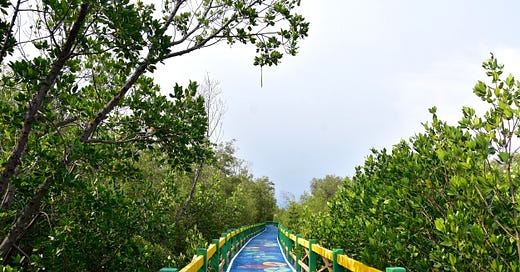



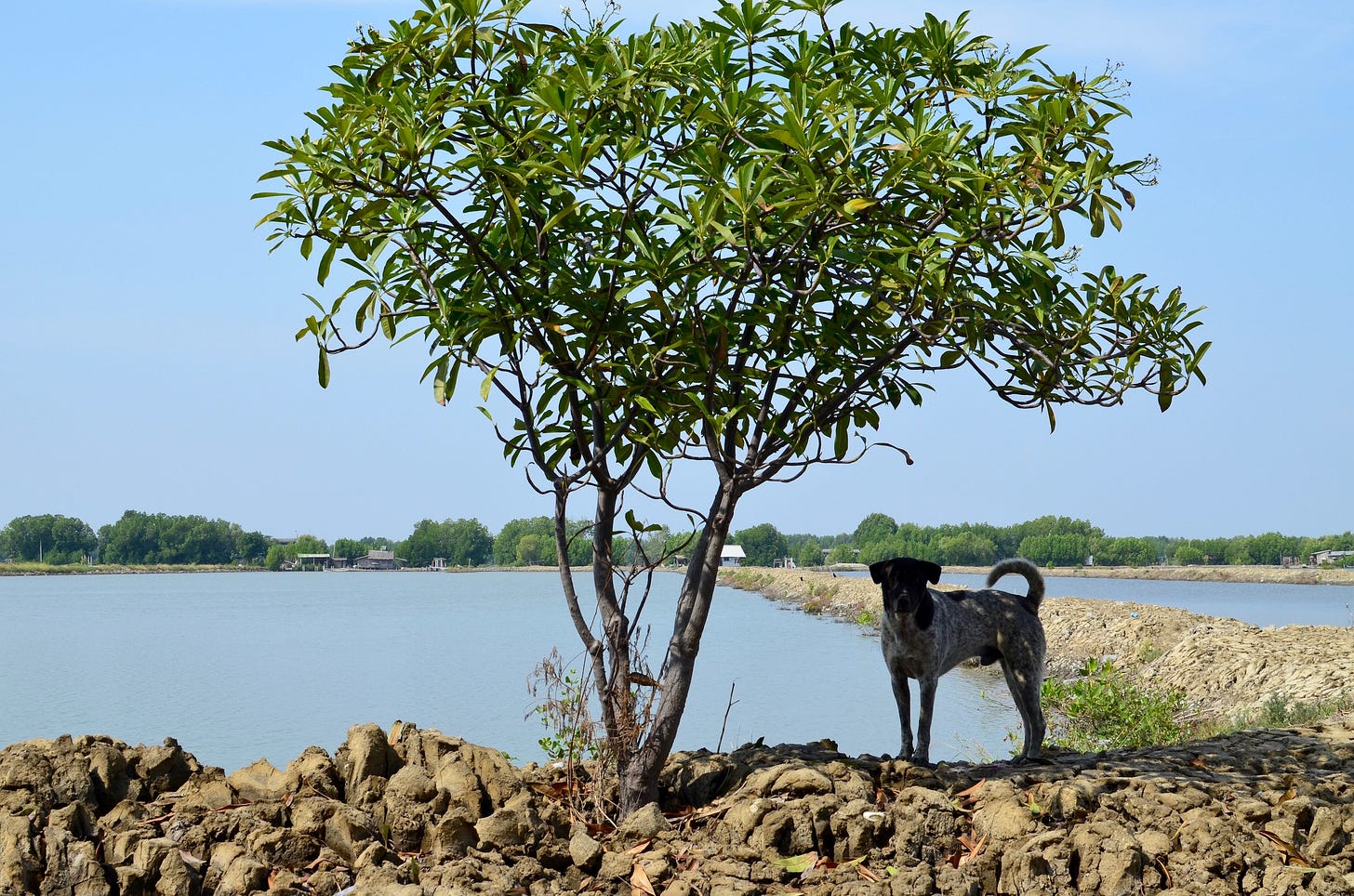

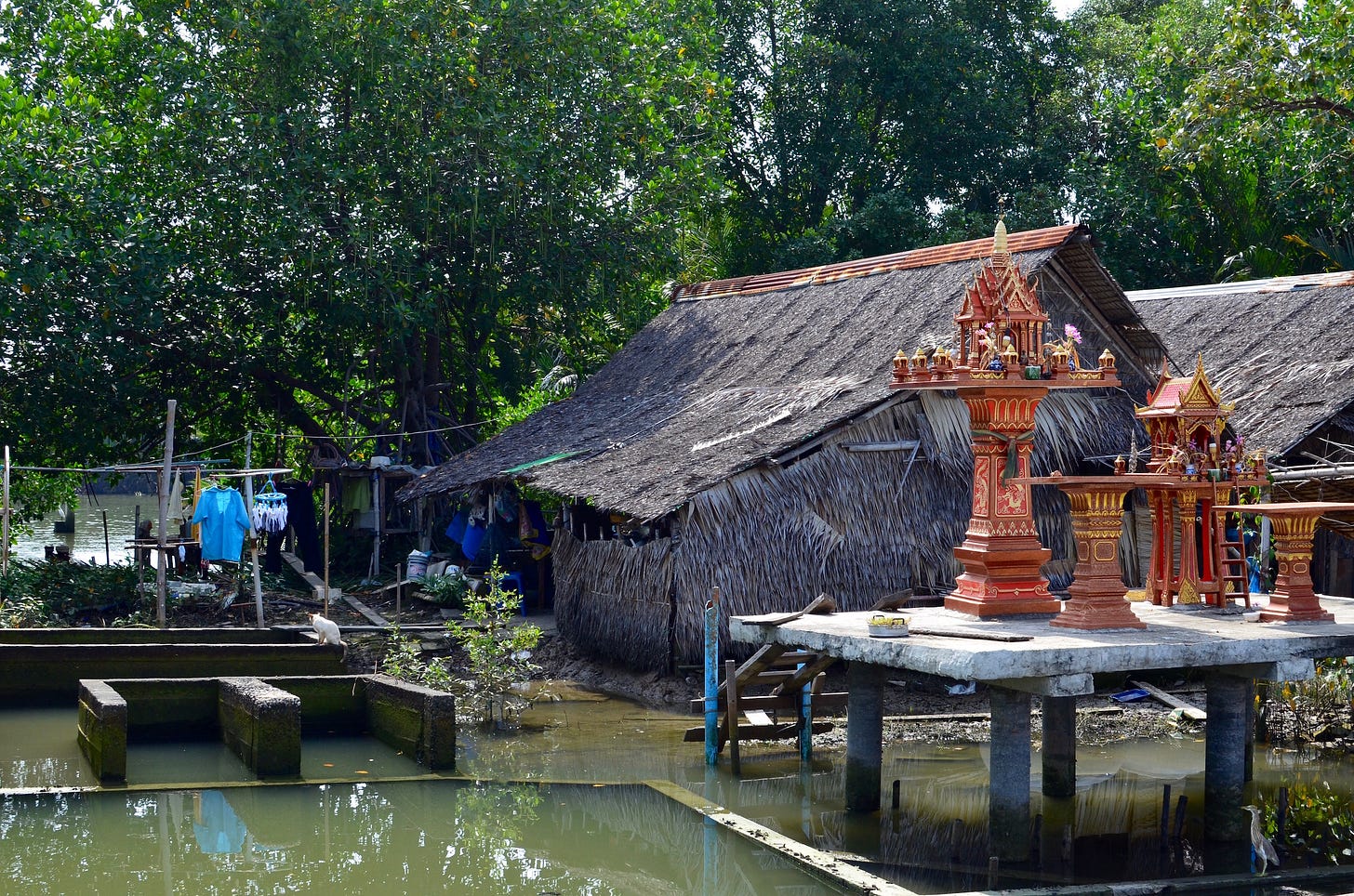
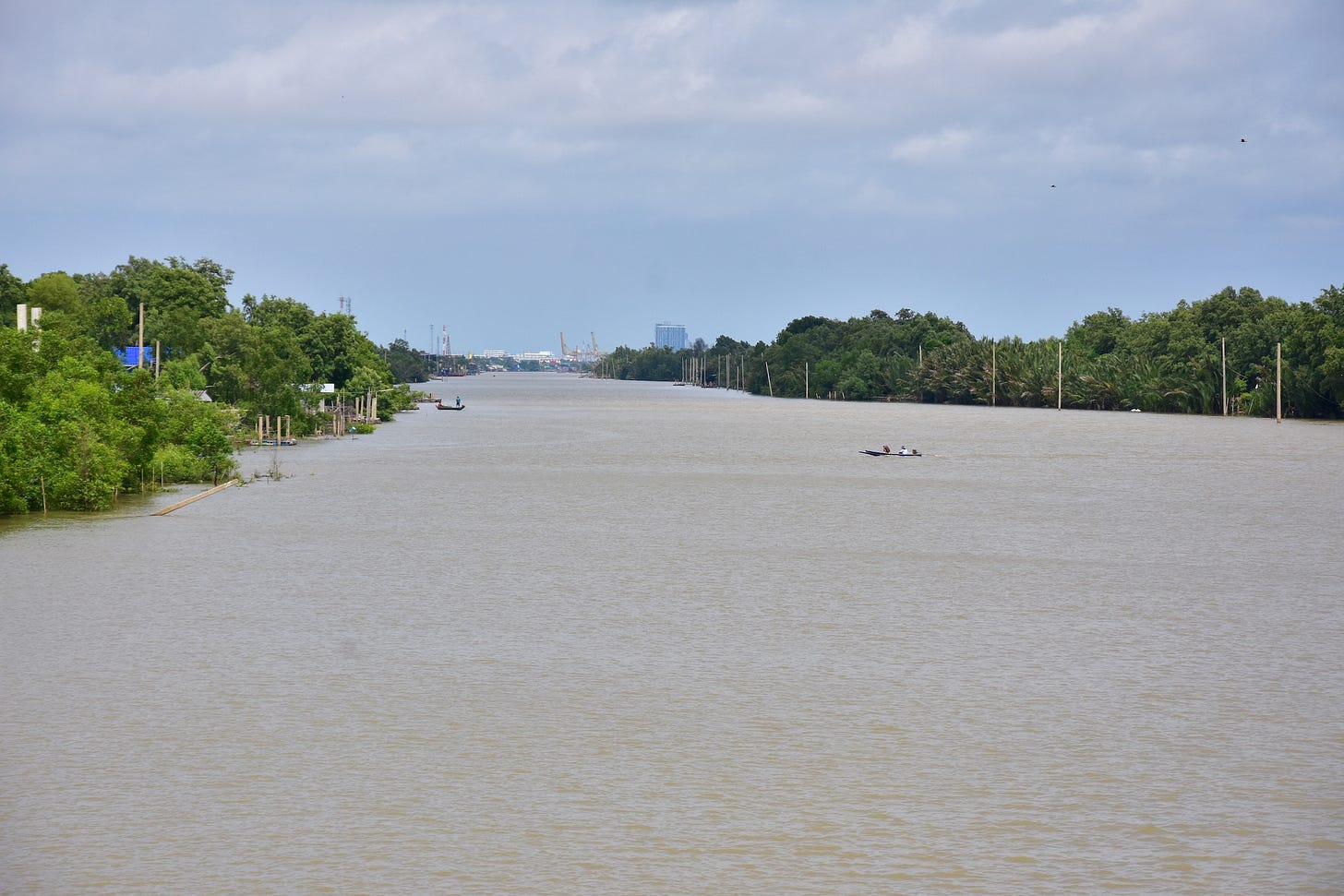
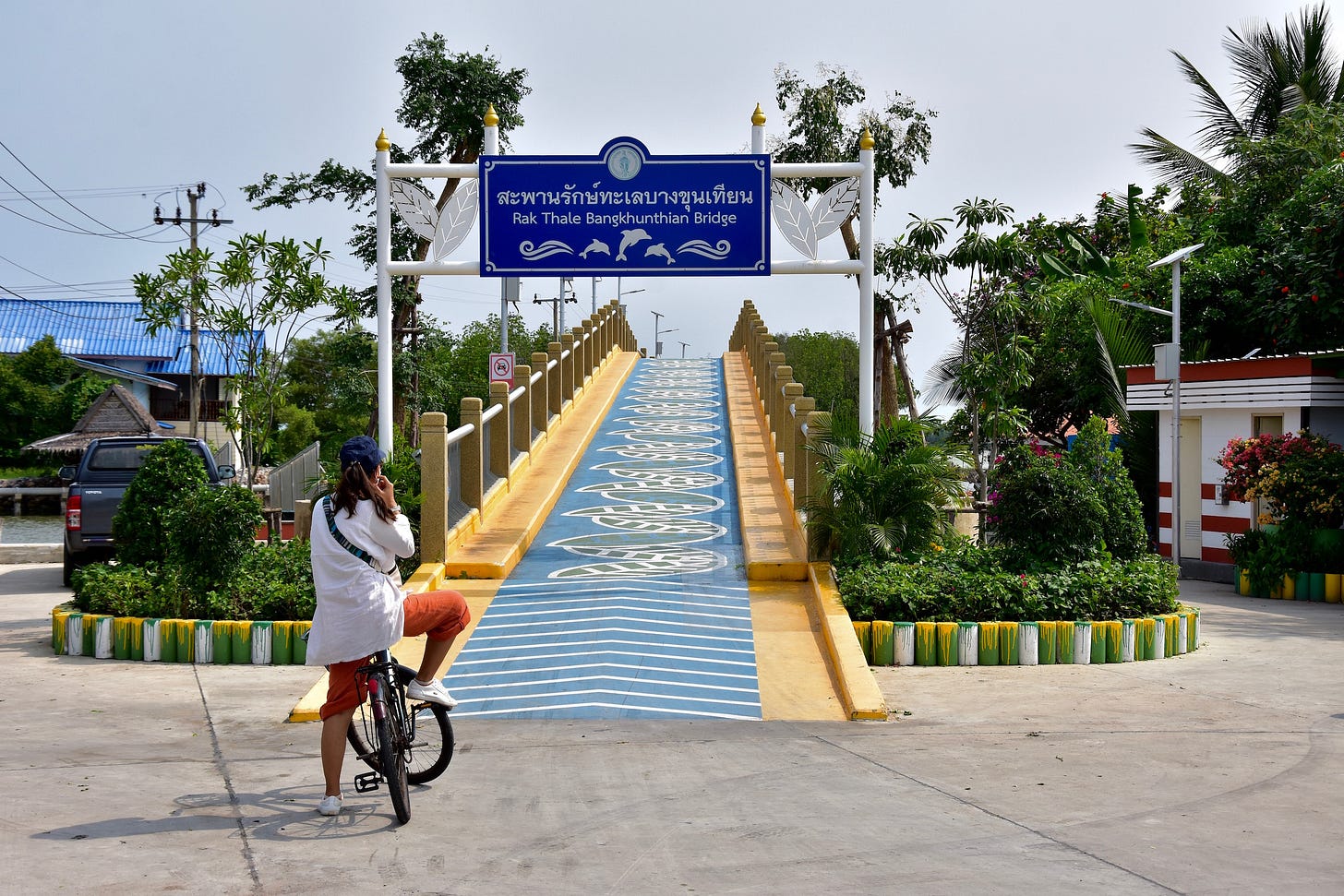
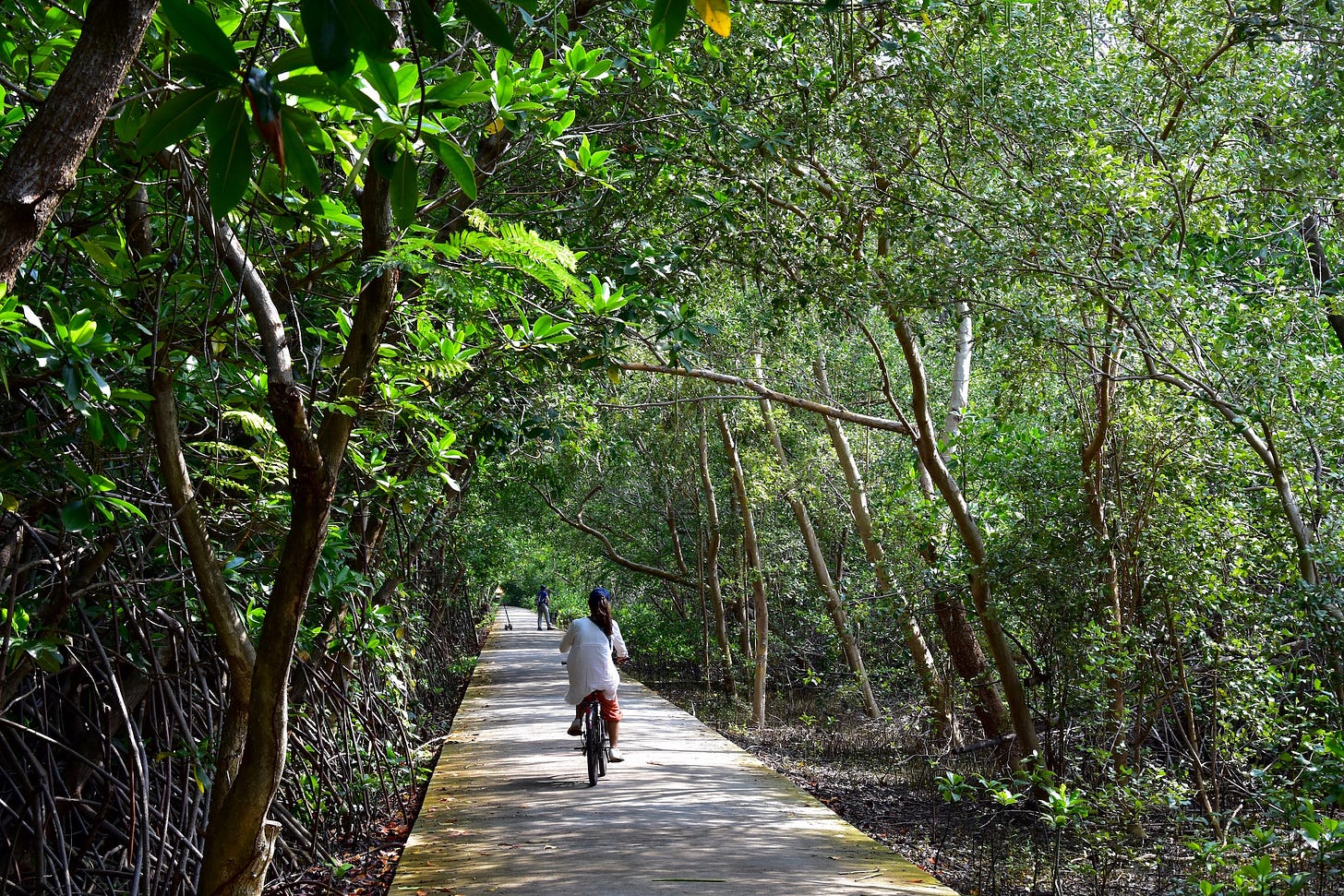
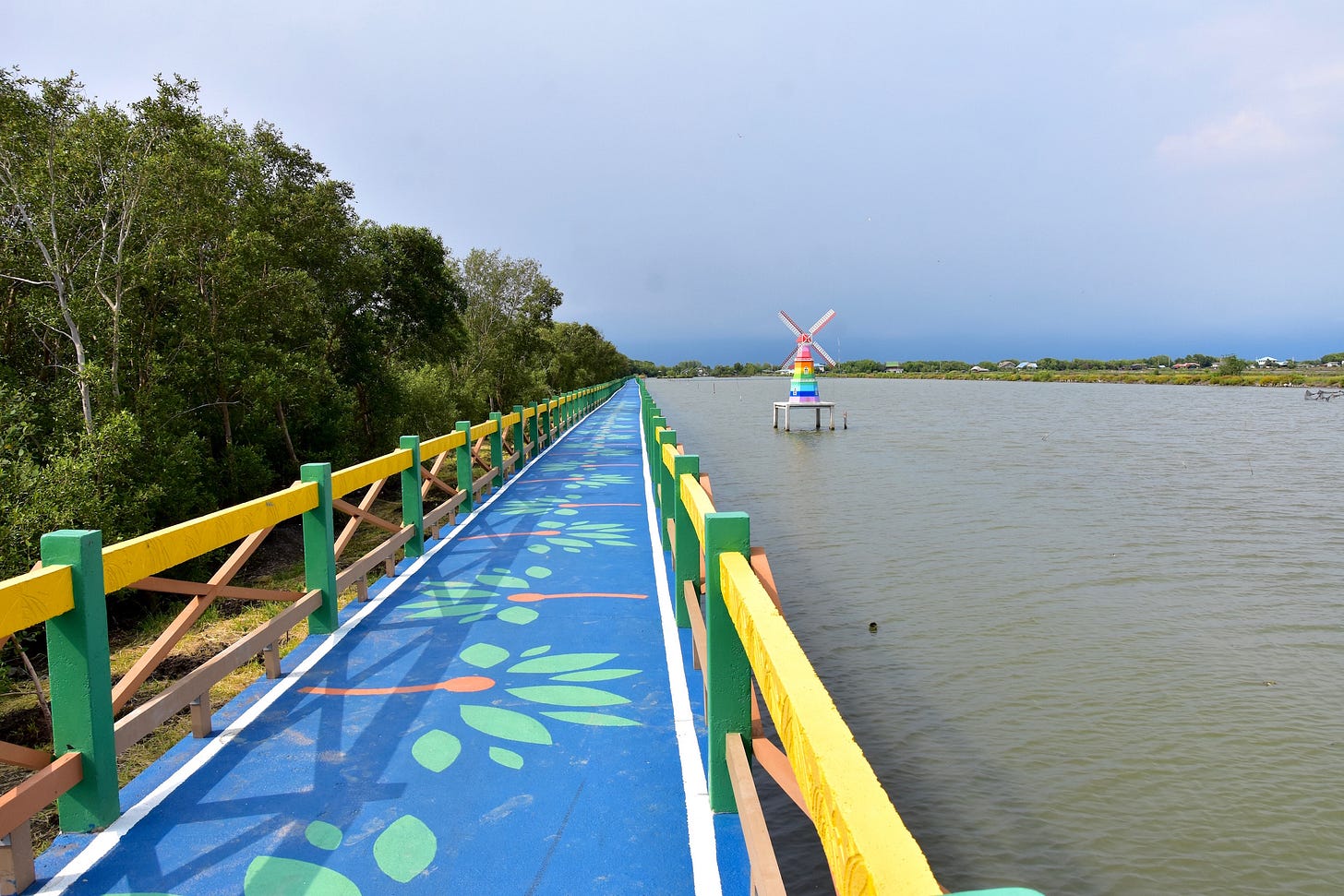
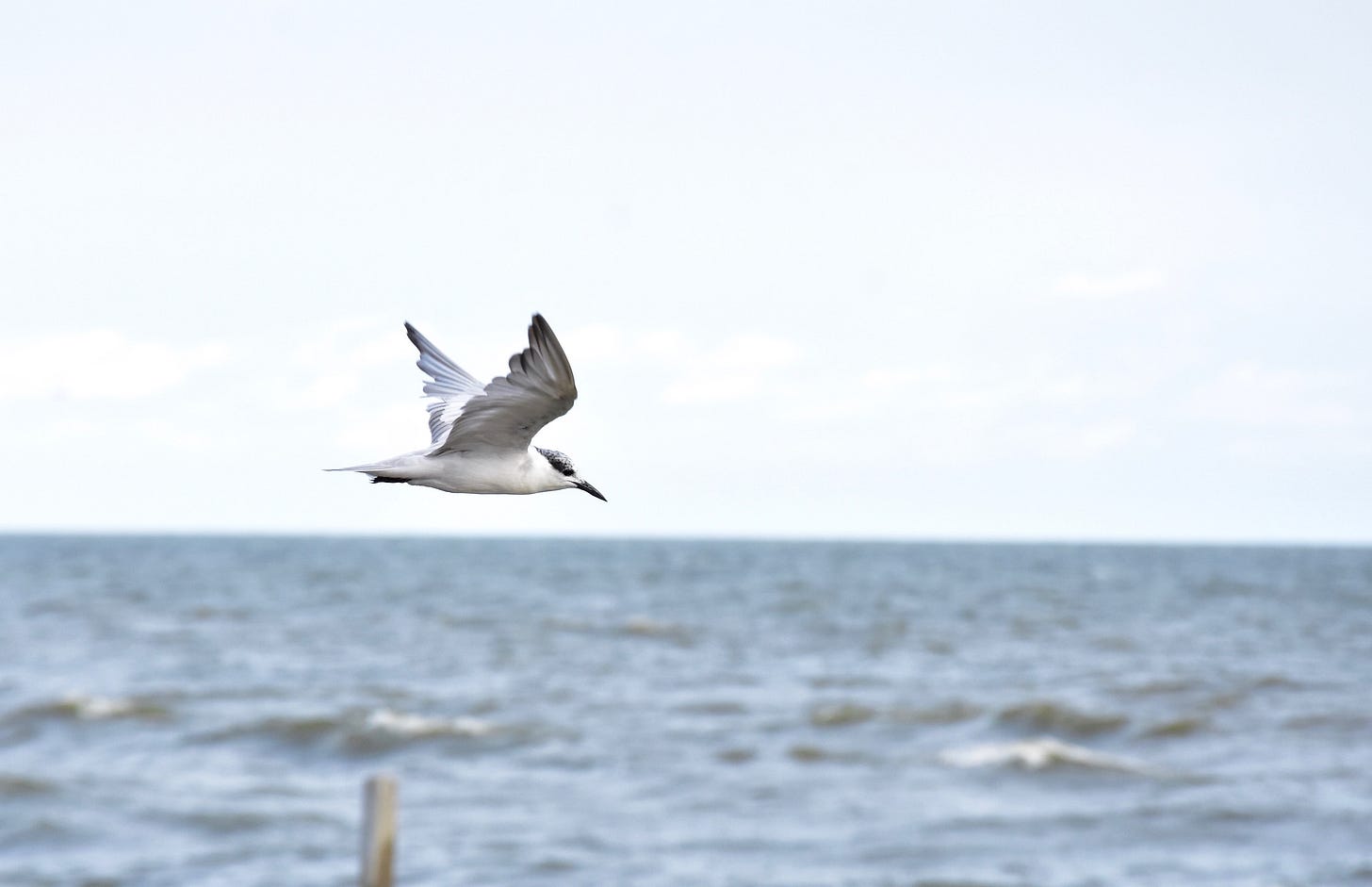

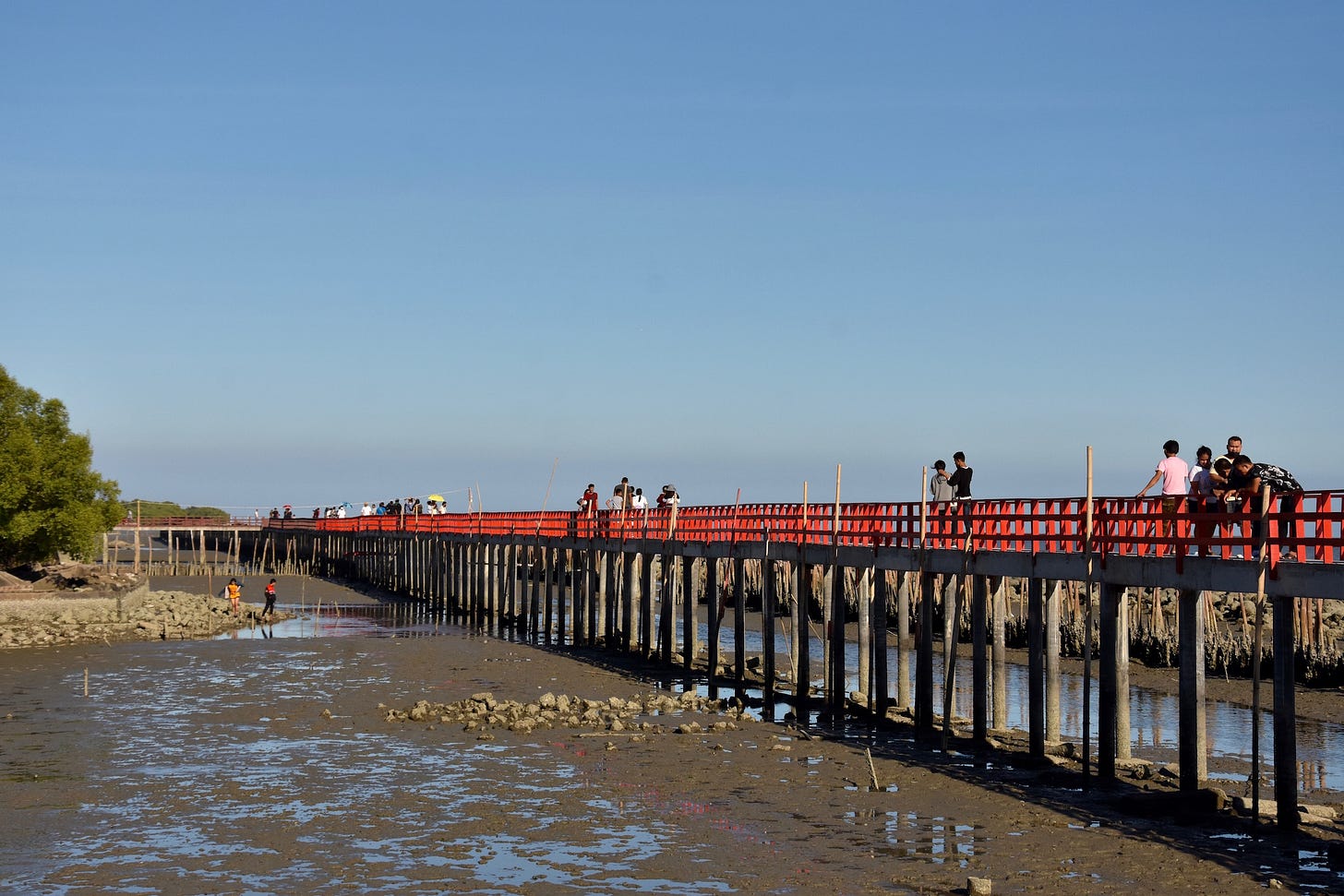
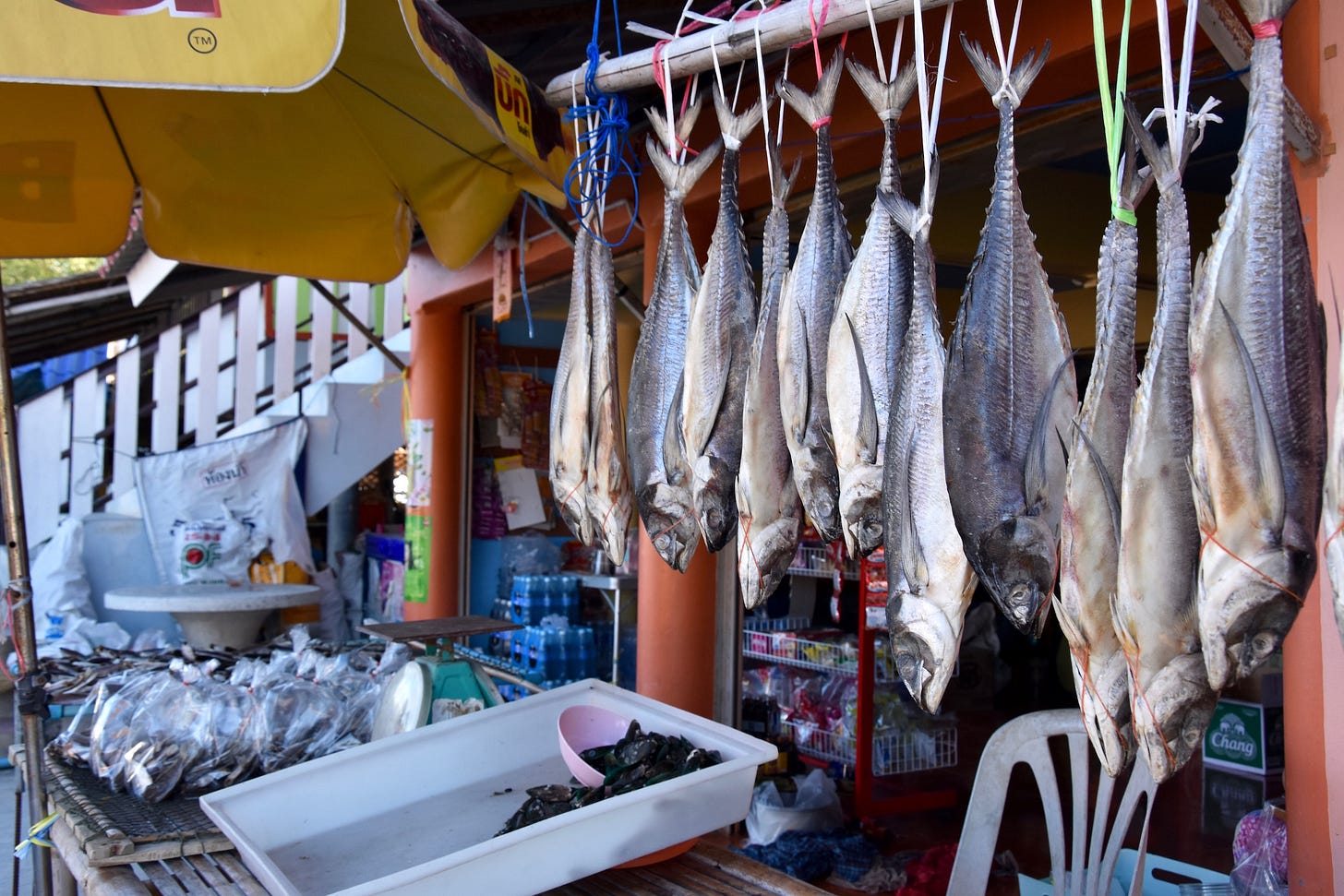
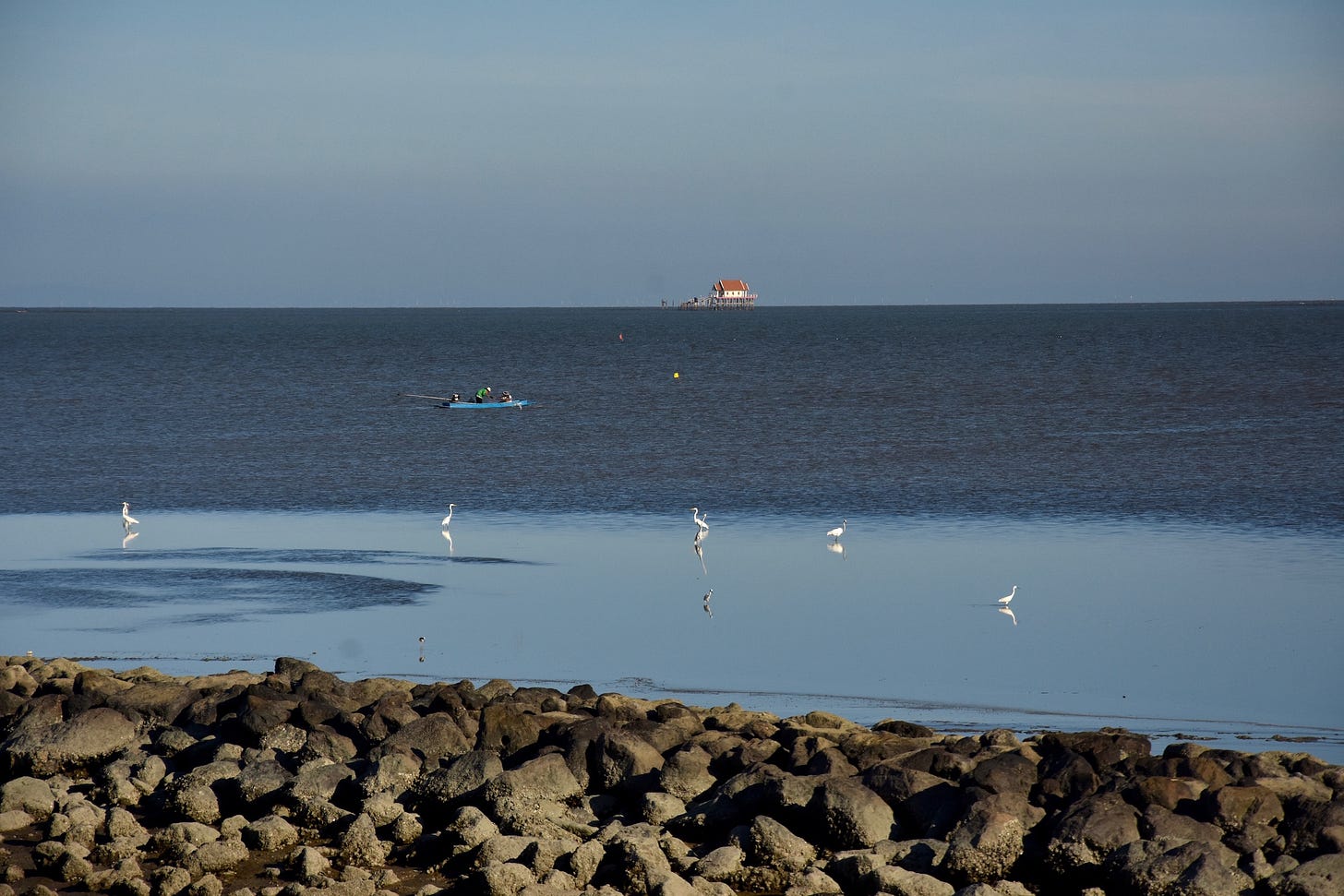
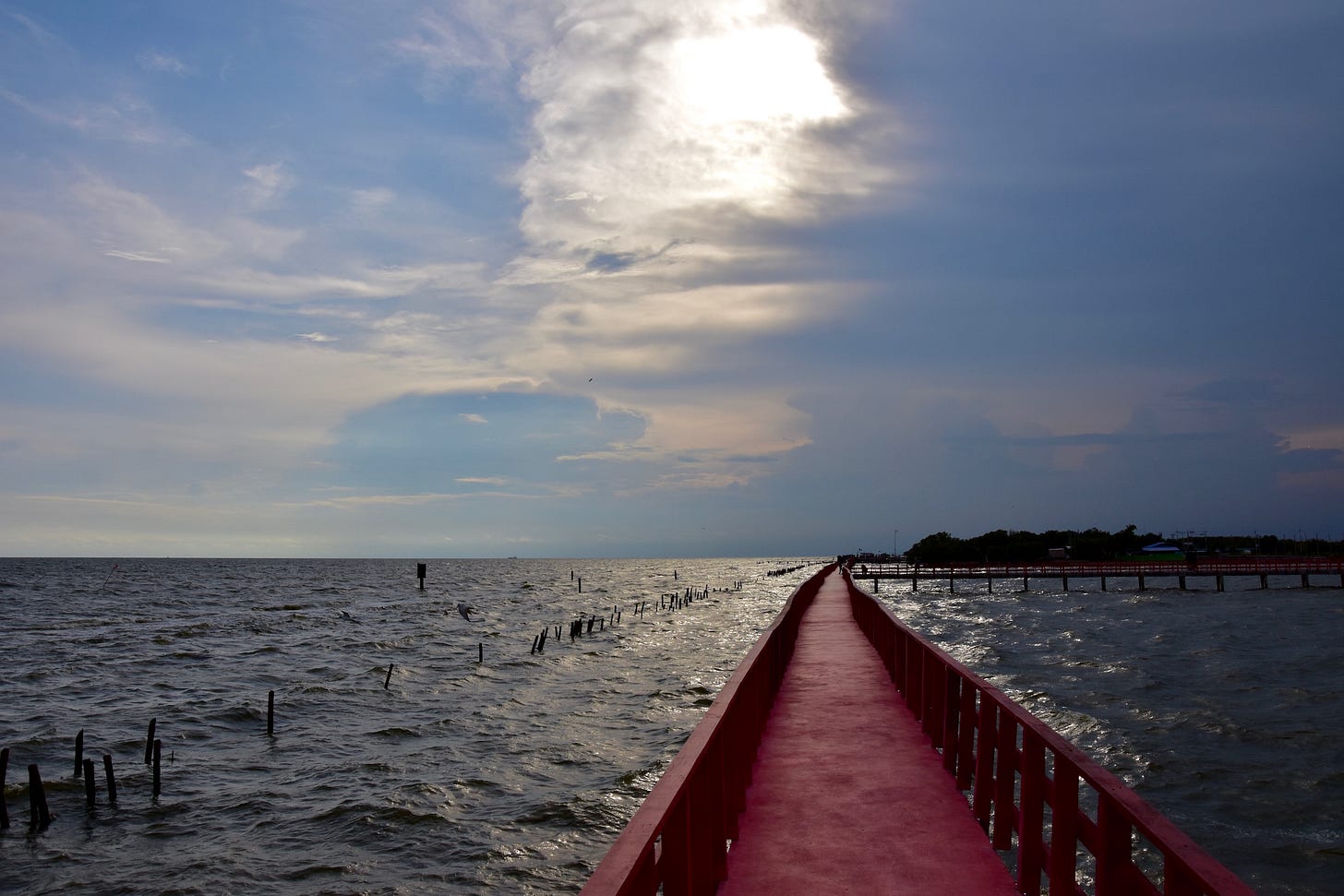
Nobody knows coastal Thailand like Leukens, and although for the last decade my travels have focused inland doing wildlife surveys in national parks across Southeast Asia -including Thailand- David has resparked my interest in Thailand's islands, beaches, canals, swamps, and other unknown watery watersides of hither and thither. When I return, I will begin to explore these areas once again, thanks to D. Leukens.
Thank you for a fascinatingly informative post on Bangkok, who would have thought it?